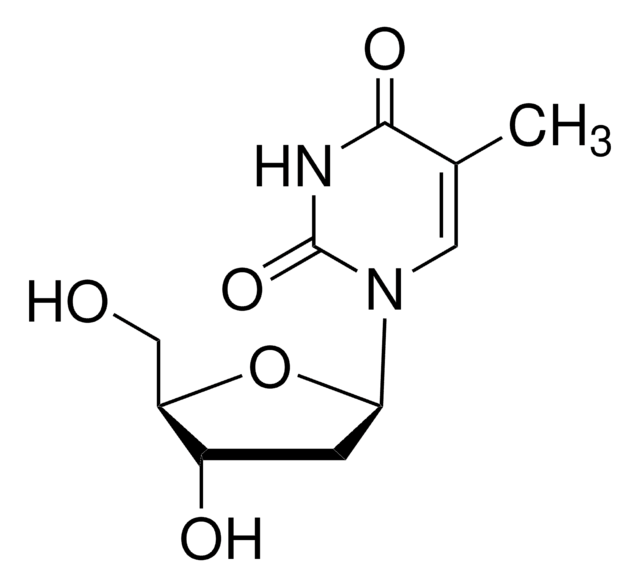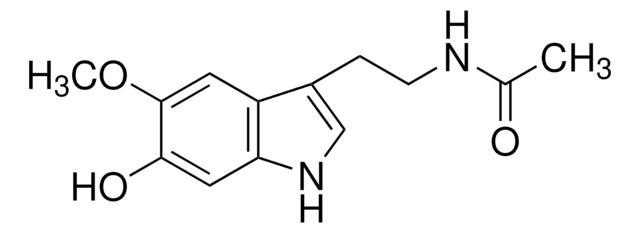Wichtige Dokumente
M5820
M344
≥98% (HPLC), powder
Synonym(e):
4-(Dimethylamino)-N-[7-(hydroxyamino)-7-oxoheptyl]-benzamide, MS 344, D237, N-Hydroxy-7-(4-dimethylaminobenzoyl)-aminoheptanamide
About This Item
Empfohlene Produkte
Qualitätsniveau
Assay
≥98% (HPLC)
Form
powder
Lagerbedingungen
protect from light
Farbe
white to beige
Löslichkeit
DMSO: 10 mg/mL, clear
Lagertemp.
2-8°C
SMILES String
CN(C)c1ccc(cc1)C(=O)NCCCCCCC(=O)NO
InChI
1S/C16H25N3O3/c1-19(2)14-10-8-13(9-11-14)16(21)17-12-6-4-3-5-7-15(20)18-22/h8-11,22H,3-7,12H2,1-2H3,(H,17,21)(H,18,20)
InChIKey
MXWDSZWTBOCWBK-UHFFFAOYSA-N
Biochem./physiol. Wirkung
Leistungsmerkmale und Vorteile
Ähnliches Produkt
Lagerklassenschlüssel
11 - Combustible Solids
WGK
WGK 3
Flammpunkt (°F)
Not applicable
Flammpunkt (°C)
Not applicable
Hier finden Sie alle aktuellen Versionen:
Besitzen Sie dieses Produkt bereits?
In der Dokumentenbibliothek finden Sie die Dokumentation zu den Produkten, die Sie kürzlich erworben haben.
Artikel
Epigenetic modifications are thought to occur through two key interconnected processes—DNA methylation and the covalent modification of histones.
Verwandter Inhalt
We offer a variety of small molecule research tools, such as transcription factor modulators, inhibitors of chromatin modifying enzymes, and agonists/antagonists for target identification and validation in gene regulation research; a selection of these research tools is shown below.
Unser Team von Wissenschaftlern verfügt über Erfahrung in allen Forschungsbereichen einschließlich Life Science, Materialwissenschaften, chemischer Synthese, Chromatographie, Analytik und vielen mehr..
Setzen Sie sich mit dem technischen Dienst in Verbindung.






